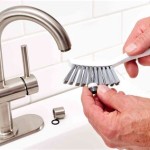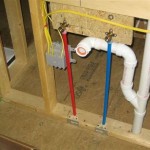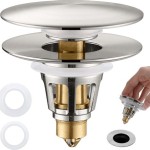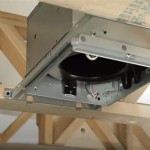How to Replace a Countertop Bathroom Sink in Singapore
Replacing a countertop bathroom sink in Singapore is a common home improvement project that can significantly update the look and functionality of a bathroom. While it might seem daunting, with careful planning, the right tools, and a step-by-step approach, a homeowner can successfully complete this task. This article provides a comprehensive guide to assist individuals in replacing their countertop bathroom sink in Singapore, adhering to local standards and practices.
Singapore's plumbing regulations generally mandate using licensed plumbers for significant alterations to water supply lines. However, replacing a sink within the existing plumbing footprint might be permissible for a homeowner with adequate skills. Always consult the Building and Construction Authority (BCA) guidelines to ensure compliance and avoid potential penalties. It is prudent to obtain professional advice if there is any uncertainty about the scope of permitted works.
1. Preparation and Planning
Before commencing any work, thorough preparation is crucial. This involves selecting the appropriate replacement sink, gathering the necessary tools, and understanding the existing plumbing setup.
Selecting the New Sink: Measure the existing sink and the countertop opening accurately. When choosing a replacement, consider the dimensions, style (undermount, drop-in, vessel), and material (ceramic, porcelain, stainless steel, stone resin). Ensure the new sink is compatible with the existing faucet fixtures. In Singapore, popular brands are available at established hardware stores and bathroom supply retailers. Pay attention to the Water Efficiency Labeling Scheme (WELS) ratings on faucets to promote water conservation.
Gathering Tools and Materials: A successful sink replacement requires the following tools: adjustable wrench, basin wrench (also known as a sink wrench), plumber's putty or silicone caulk, putty knife, screwdriver (Phillips and flathead), pliers, measuring tape, bucket, towels or rags, safety glasses, work gloves, and a new supply line (if necessary). Additional materials may include shims for leveling, mounting clips, and cleaner/degreaser. In Singapore, these tools can be easily sourced from hardware stores like Selffix DIY or Home-Fix.
Understanding the Existing Plumbing: Inspect the existing plumbing configuration under the sink. Identify the shut-off valves for both hot and cold water supply lines. If shut-off valves are absent or malfunctioning, it is strongly advised to engage a licensed plumber to install or repair them before proceeding. Familiarize yourself with the drain assembly and how it connects to the P-trap. Taking photographs of the existing setup can be helpful for reassembly.
Safety Precautions: Always prioritize safety. Turn off the water supply to the sink at the shut-off valves. Wear safety glasses to protect eyes from debris and gloves to protect hands. Ensure adequate ventilation in the bathroom.
2. Removal of the Old Sink
Carefully dismantling the old sink is essential to avoid damage to the countertop or plumbing fixtures. This step involves disconnecting the water supply, detaching the drain assembly, and removing the sink from the countertop.
Disconnecting the Water Supply: Place a bucket under the shut-off valves to catch any residual water. Use an adjustable wrench to disconnect the supply lines from the shut-off valves. If the supply lines are old or corroded, it is recommended to replace them with new ones. Clean the threads of the shut-off valves with a wire brush to ensure a proper seal with the new supply lines.
Detaching the Drain Assembly: Use a basin wrench or pliers to loosen the slip nuts connecting the drain tailpiece to the P-trap. Carefully detach the drain tailpiece. Unscrew the locknut holding the drain flange to the sink. Use a putty knife to gently separate the drain flange from the sink. Clean any old putty or sealant from the countertop and drain opening.
Removing the Sink from the Countertop: Depending on the type of sink, it might be held in place by mounting clips or adhesive. For drop-in sinks, carefully pry up the edges using a putty knife, working around the perimeter. For undermount sinks, check for mounting clips underneath the countertop. Loosen or remove these clips. If the sink is adhered with silicone or adhesive, use a putty knife to carefully cut through the adhesive. Once the sink is free, carefully lift it out of the countertop opening. Clean the countertop opening thoroughly, removing any remaining adhesive or sealant.
Proper Disposal: Dispose of the old sink responsibly. Coordinate with your local waste management services in Singapore to determine the appropriate method for disposal.
3. Installing the New Sink
Installing the new sink involves setting the sink in place, connecting the drain assembly, connecting the water supply lines, and ensuring a watertight seal.
Preparing the Sink and Countertop: Apply a bead of plumber's putty or silicone caulk around the rim of the sink opening on the countertop. This will create a watertight seal between the sink and the countertop. For undermount sinks, install the mounting clips according to the manufacturer's instructions.
Setting the Sink in Place: Carefully lower the new sink into the countertop opening. Ensure it is centered and aligned correctly. For drop-in sinks, press down firmly to seat the sink in the putty or caulk. For undermount sinks, tighten the mounting clips to secure the sink to the countertop. Wipe away any excess putty or caulk with a damp cloth.
Connecting the Drain Assembly: Install the new drain flange into the sink opening. Apply a bead of plumber's putty under the flange to ensure a watertight seal. Tighten the locknut from underneath the sink. Connect the drain tailpiece to the drain flange and the P-trap. Tighten the slip nuts securely. Ensure the drain assembly is properly aligned to prevent leaks.
Connecting the Water Supply Lines: Connect the new supply lines to the faucet and the shut-off valves. Tighten the connections with an adjustable wrench. Avoid overtightening, which could damage the fittings. Turn on the water supply slowly and check for leaks at all connections. If leaks are detected, tighten the connections further or replace the Teflon tape on the threads.
Testing and Final Adjustments: Run water into the sink and check for leaks around the drain and faucet. Ensure the drain is functioning properly. Adjust the sink's position if necessary. Allow the plumber's putty or caulk to cure completely before using the sink extensively. This usually takes 24-48 hours. Inspect all connections periodically for any signs of leaks.
Sealing Gaps: After the sink is installed, seal any gaps between the sink and the countertop with silicone caulk. This will prevent water from seeping underneath and causing damage.
Addressing Potential Issues: During the sink replacement process, several potential issues may arise. These include leaking connections, misaligned drains, and unstable sink placement.
Leaking Connections: If leaks are detected at the water supply connections, first ensure the connections are properly tightened. If the leak persists, try replacing the Teflon tape on the threads. For drain leaks, check the tightness of the slip nuts and ensure the drain assembly is properly aligned. If necessary, replace the slip washers.
Misaligned Drains: If the drain is not properly aligned, the P-trap may not connect correctly. This can lead to slow drainage or leaks. Adjust the position of the P-trap by loosening the slip nuts and repositioning it. Consider using flexible drain extensions if necessary to accommodate misalignments.
Unstable Sink Placement: If the sink is not level or stable, it may rock or shift, potentially causing damage to the countertop or plumbing connections. Use shims to level the sink and ensure it is securely mounted. Re-tighten the mounting clips for undermount sinks to ensure a firm grip.
By carefully following these steps and troubleshooting any issues that arise along the way, a homeowner can successfully replace a countertop bathroom sink in Singapore and enhance the functionality and aesthetics of their bathroom. Always remember to consult with a licensed plumber for any complex or uncertain plumbing situations to ensure safety and compliance with local regulations.

Replace Wash Basin Why When To How Choose One

Wash Basin Installation Replacement Mr Plumber Singapore 1 Recommended Affordable Plumbing Services

Wash Basin Installation Replacement Mr Plumber Singapore 1 Recommended Affordable Plumbing Services

Basin Replacement Installation Plumber Singapore

Replace Wash Basin Why When To How Choose One

Replace Wash Basin Why When To How Choose One

Replace Wash Basin Why When To How Choose One

Basin Tap Replacement In Singapore Hdb Bit Panjang Mr Plumber 1 Recommended Affordable Plumbing Services

Learn Installing A Countertop Sink Diy Projects

What Is Integrated Sink Why You Should Have One
Related Posts







